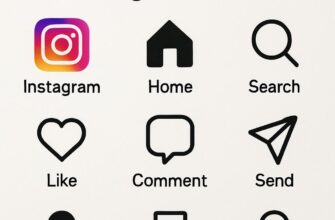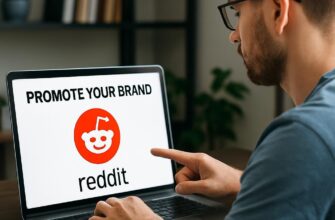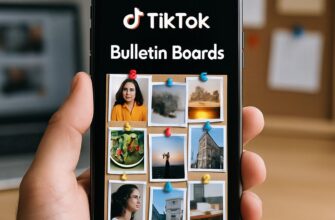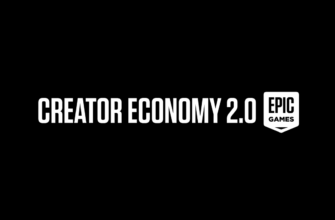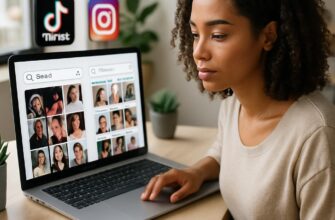When headlines flashed that Trump signed an executive order on the TikTok deal. The social network will continue to operate in the US., many users breathed a sigh of relief — and many others leaned in, eager to understand what had actually changed. The story is part policy, part commerce, and entirely about a tiny app with massive cultural weight.
- How we got here: a quick timeline
- The anatomy of the proposed deal
- What the executive order actually did
- National security concerns: real risks and rhetorical theater
- Reactions from users, creators, and the tech industry
- What this meant for business and markets
- How this affects data, moderation, and users’ privacy
- Legal challenges and the role of the courts
- What users should expect in the near term
- Lessons from the situation: policy, tech, and the public square
- Practical timeline and what to watch next
- My own view from the field
How we got here: a quick timeline
The controversy dates back to 2020, when U.S. officials raised national security concerns about ByteDance, the China-based parent of TikTok. The Trump administration argued that the company’s data collection practices could put American user data at risk and used executive powers to press for a divestiture or ban.
Over the summer and early fall of 2020, the administration issued orders aiming to limit transactions between ByteDance and U.S. entities unless ByteDance sold TikTok’s U.S. operations. That pressure produced a flurry of potential suitors and a proposed partnership with Oracle and Walmart that would reshape TikTok’s ownership and data governance.
Negotiations, court challenges, and intense public debate followed. The result — a narrowly tailored executive action that acknowledged a negotiated deal — signaled that the app could remain in American marketplaces while new governance structures and oversight measures were put in place.
The anatomy of the proposed deal
The central elements of the arrangement focused on three pieces: ownership, data security, and governance. Under the plan, Oracle and Walmart would take roles that gave them influence over TikTok’s U.S. operations without necessarily assuming outright control of ByteDance.
Oracle’s role emphasized cloud hosting and security infrastructure, promising that U.S. user data would be stored and managed on American systems. Walmart’s participation was pitched as a commercial and advertising partner, offering distribution muscle and retail integration for creators and brands.
Proponents said the structure would address the immediate worries about data access and foreign influence while preserving the app’s creative ecosystem. Opponents questioned whether minority ownership and contractual safeguards would be enough to prevent Beijing from exerting behind-the-scenes influence.
What the executive order actually did
The executive order didn’t accomplish a full corporate sale or a wholesale transformation of TikTok overnight. Instead, it formally recognized a framework in which the app could keep operating in the U.S. while specific security and oversight conditions were implemented.
Practically, the order gave federal agencies clearer authority to monitor compliance and to require additional safeguards if gaps emerged. It set milestones and compliance steps rather than rewriting corporate structure in a single stroke.
Legally, the measure fit into a broader pattern of trade and national-security tools being used to influence technology transfers. It stopped short of imposing a pure ban, favoring a negotiated remedy that preserved user access while attempting to cut off potential avenues of data exposure.
National security concerns: real risks and rhetorical theater
National security officials pointed to familiar alarm bells: heavy data collection, opaque algorithms, and Chinese laws that could compel companies to assist state intelligence work. In that light, the appetite for remedial action is understandable.
But distinguishing real vulnerability from political theater is important. Large platforms routinely collect vast amounts of data — TikTok is not unique in that regard — and incentives to protect data exist across the private sector. The question was whether ByteDance’s ties to China created a unique set of risks that required extraordinary remedies.
Expert assessments varied. Some cybersecurity analysts welcomed the move toward U.S.-based data controls and new oversight. Others warned that piecemeal restrictions create precedents that confuse norms and may not ultimately reduce risk if they fail to address the underlying technical pathways of access.
Reactions from users, creators, and the tech industry
For everyday users — teens, creators, and casual browsers — the most immediate concern was access. Would dances, comedy skits, and personal videos vanish from app stores? The order’s emphasis on continuity calmed many of them.
Creators, whose livelihoods depend on reach and monetization, watched the negotiations closely. Influencers with six-figure audiences expressed relief that a ban would not sever their income streams, but they also raised questions about how new ownership and policies might alter algorithmic promotion or ad revenue splits.
Tech companies had mixed responses. Oracle and Walmart welcomed the chance to be seen as trusted stewards, while other firms warned that forced sales or government pressure could chill investment and complicate cross-border partnerships.
What this meant for business and markets
Financially, any deal that preserves access to the U.S. market is valuable. TikTok’s ad business and creator economy are substantial, and removing that market would have been costly to ByteDance and the broader advertising ecosystem.
For Oracle and Walmart, the opportunity represented a strategic pivot: Oracle into cloud and security services for consumer platforms, Walmart into digital media and commerce. Both stood to gain nontrivial advantages if the partnership held together.
Investors took a cautious stance. Markets dislike uncertainty, and the legal and diplomatic wrangling kept valuations and future prospects murky. A clear, enforceable agreement would likely stabilize expectations; ambiguity kept them volatile.
How this affects data, moderation, and users’ privacy
At the core of the debate is control over user data and the algorithmic decisions that shape what people see. The deal sought to cut off foreign-state access by moving key data operations and granting oversight to U.S.-based entities.
That technical fix matters, but it is not a silver bullet. Data flows are complex; access can be indirect and mediated by code, APIs, or personnel. True assurance depends on rigorous audits, transparent policies, and enforceable penalties if the safeguards fail.
For users, the practical changes might be subtle. You’d still scroll the For You page, upload clips, and interact with friends. But behind the scenes, data storage, contractual controls, and third-party audits could change how secure that activity really is.
Legal challenges and the role of the courts
Executive action is powerful but not absolute. Courts play a central role in evaluating whether measures exceed constitutional or statutory boundaries. In related matters, lawsuits had already delayed or blocked earlier prohibitions.
Companies and civil liberties groups challenged the administration’s authority on several grounds, from free speech to due process. Those challenges influenced the government’s decision to favor a negotiated remedy rather than a blunt ban, which could be easier to defend in court.
Future litigation remains likely, particularly if the terms of the deal are opaque or enforcement lapses. The judiciary will continue to be the arbiter when executive power and commercial rights collide.
What users should expect in the near term
Practically speaking, most people will notice little immediate change. The app’s core functionality, community, and creator tools remain intact under the arrangement outlined by the executive order.
If you’re a creator, keep an eye on any new monetization rules, partnership programs, or moderation policy updates that might change how content is promoted or monetized. Brands should monitor ad tools and data policies to ensure compliance with new governance structures.
For privacy-minded users, keep using available settings: review app permissions, limit unnecessary data sharing, and use built-in privacy features. Legislative and regulatory changes can complement technical hygiene, but individual practices still matter.
Lessons from the situation: policy, tech, and the public square
One lesson is that digital platforms are now central to national debates about security, commerce, and culture. Pressure points arise where data, geopolitics, and mass communication intersect, and policymakers will be tempted to act swiftly.
Another takeaway is the importance of transparent remedies. Negotiated solutions that include audited technical changes and clear oversight are more durable than ad hoc bans or last-minute divestitures. People need both protection and predictability.
Finally, the episode showed how quickly a platform can become a symbol — not just of technology, but of larger tensions between nations and values. That makes clear communication and measured policy responses essential.
Practical timeline and what to watch next
Below is a compact timeline to help track what happens next and where to look for credible updates.
| Stage | What to watch |
|---|---|
| Implementation | Data migration, cloud hosting contracts, and early audits |
| Oversight | Delegated agencies publishing compliance reports |
| Litigation | Possible lawsuits challenging aspects of the deal or enforcement |
| Policy follow-up | Congressional hearings or new legislation on data sovereignty |
My own view from the field
As someone who’s watched platforms rise and fall, I’ve seen how sudden policy moves can ripple through creator communities overnight. I remember advising small creators during a previous platform disruption; their primary fear wasn’t the politics, it was losing an audience that was their livelihood.
This matter is no different. Pragmatism matters here: protecting user data and ensuring free expression are both valid goals. The order’s promise that TikTok can continue operating in the U.S. buys time to test whether proposed safeguards actually work in practice.
The journey is not over. Enforcement, transparency, and legal reviews will determine whether the deal is a durable fix or a temporary truce. For now, users can keep scrolling, creators can plan campaigns, and policymakers will keep watching to ensure the safeguards live up to their promise.
